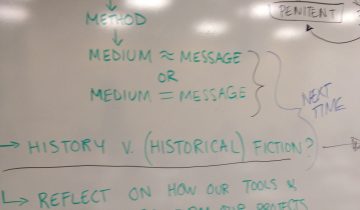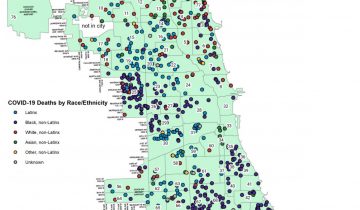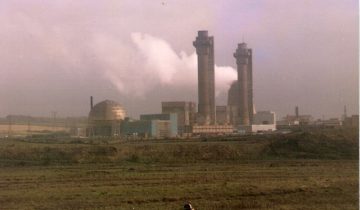This semester, the students in my “Disasters!” class had the opportunity to interview experts in several fields about historical disasters that have catalyzed legislative and social change. Students chose professors or other workers in the fields they’ve been studying in class, and spoke with them about the history of specific disasters–including Chernobyl, Love Canal, Bhopal, The Hyatt Recency catwalk collapse, and The Lady of Angels fire.
Then, they tried to figure out how these disasters have changed the way we do things.
Interviewees included a hazardous waste expert, a fire chief, an industrial chemist, and more. The podcasts are posted in the comments below. (Scroll down to play them.)
If you enjoy these podcasts, or are interested in learning more, tweet us at @digihistorylab




Joaquin, Seth, & Yona
A Civil Engineering Disaster Prompts Revisions in Disaster Response:
The 1981 Hyatt Regency Hotel catwalk collapse, Kansas City
Interview with Professor Lemming, Illinois Institute of Technology
https://www.youtube.com/watch?v=Si4ORwhYt0Y&feature=youtu.be
Highlights from Professor Lemming:
“Back when I was a young engineer, we didn’t have any computers. We just had slide rules… so each calculation was checked by multiple engineers. Now it’s one engineer with a computer. We don’t do the kind of triple and quadruple checking we used to do.”
“The reason for an engineer is not to serve their client, it’s for public safety.”
Charles Pasquinelli, Keith Van Der Molen, Liz Pierce
Interview with Professor Snyder, Illinois Institute of Technology
on the Chernobyl Disaster
https://www.youtube.com/watch?v=J-_-ZI5AImQ&feature=youtu.be
Highlights from Professor Snyder:
“The people who flew [the emergency fire suppression] helicopters would do it for as long as they could, until they literally started to get radiation sickness, which acts like a flu, but basically it just gets worse and worse until it destroys everything [in your body]. So, they were dumping sand on it like crazy, trying to get the fire to go out, because all this radiation was coming out and blowing downwind. It went pretty high in the atmosphere.”
“All they could do was seal the whole darn thing in a giant containment vessel–all the ground around it was turned into a wasteland.”
“At least a bomb stops. A reactor just keeps going until it quenches itself.”
On panic after disasters: “Myth overtakes knowledge all the time.”
Illinois Institute of Technology
History 374 – Disasters! Midterm Project
Interview with Dr. Robert L. Johnson, Argonne National Laboratory
1970’s Love Canal Disaster, Upstate New York
Interviewer: Lindani Johnson
Editor: Kraig Van Wieringen
Jonathon Kaegebein
http://youtu.be/wMURuX0W6k8
“I’ve spent most of my career working on hazardous waste sites and cleaning them up.”
“The disaster that really started my field [Environmental Security and Restoration] happened back in the 1970s, and was called Love Canal.”
“At the time that was very common: if people had waste that they did know what to do with it, they would find a pit, they would dump their waste in it, they would cover it up, and they would forget about it.”
“The city grew, and eventually grew over the waste dump. People put wells into the dump, and began drinking the water. And around the mid 1970s, there was an unusual number of birth defects in that community. Someone discovered it was because their drinking water was contaminated. Their kids were even swimming in contaminated ponds.”
“It had a dramatic effect on how engineering for waste disposal is done.”
Disaster Podcast – Fall 2014
Tom Rountree, Miguel Rodriguez, Jiede Gu
“We Have Smoke Showing”
Interview with Retired Battalion Chief Thomas O’Donnell, Chicago Fire Department
on 20th century fire disasters in the Chicago area
https://www.youtube.com/watch?v=QVGH5zieiwY&feature=youtu.be
“Any squad… all engines that are available, get ’em in here.”
Highlights from Battalion Chief O’Donnell:
“After the Lady of Angels fire [the deadliest school fire in US history], they made them install sprinkler systems, and take the combustible staircases out and put concrete and steel in… and that was not just here, it was throughout the country, because the underwriters demanded it. And that was right.”
“It was really tough… we kind of hid the bodies getting them out of there…” 92 children and 3 nuns were killed in the fire.
Jan Timpe, Karyll Hyacinthe, Steve Nelson
Bhopal Chemical Disaster, 1984
Interview with Professor Nosheen Gothard, Illinois Institute of Technology
http://youtu.be/OVJTxh3cMsk
Highlights from Professor Gothard:
“Switching the order of mixing reagents could have avoided the dangerous chemical intermediates produced [at Bhopal]…
I actually wrote an algorithm that could find out how to safely produce the desired chemical product without dangerous intermediate chemicals.”